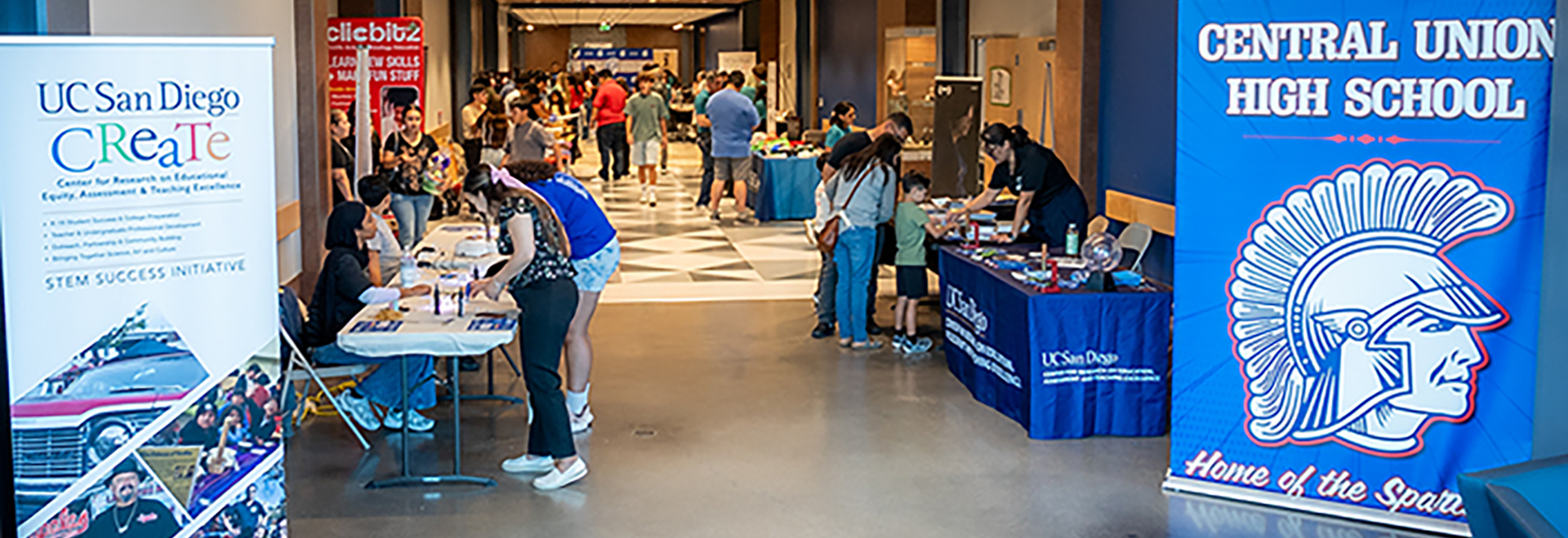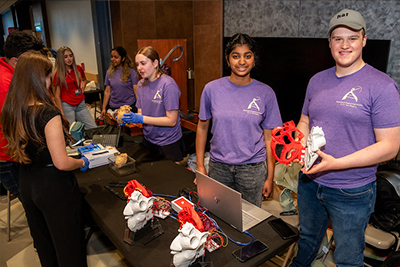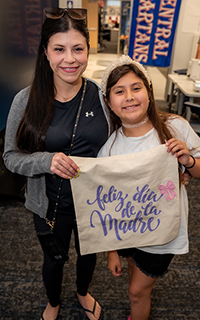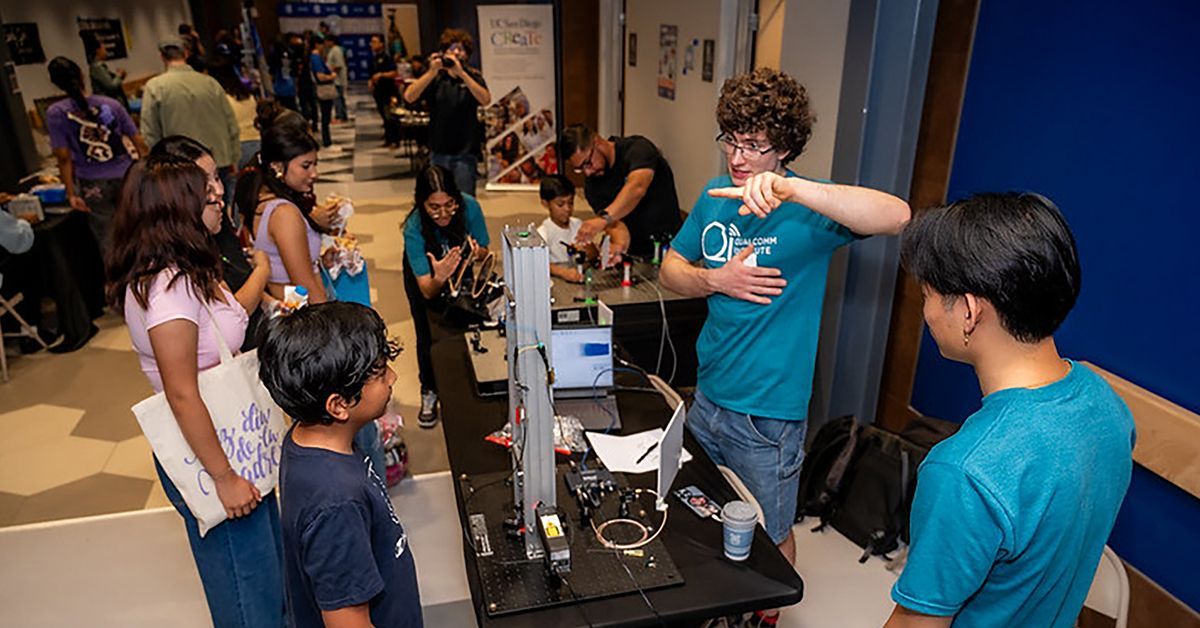Science, Technology and Mexican Mother’s Day Unite in Festive Imperial Valley STEM Day
Story by:
Published Date
Story by:
Topics covered:
Share This:
Article Content
What do Día de las Madres (Mexican Mother’s Day) and the 75th anniversary of the National Science Foundation (NSF) have in common? They both fell on May 10 this year and were celebrated together at a gathering in the Imperial Valley.
The event, organized by UC San Diego, drew more than 300 people from across the region to Central Union High School, where they had a variety of opportunities to use technology to make mothers’ gifts and learn about STEM (science, technology, engineering and math) fields. The festive atmosphere was heightened by music from a mariachi band, taco trucks and gift baskets for the first 25 mothers to enter the fair.
“This is the first time that I recall UC San Diego doing a STEM fair in the Imperial Valley,” said Ernesto Zepeda, assistant director of the Early Academic Outreach Program, part of the UC San Diego Center for Research on Education, Assessment and Teaching Excellence (CREATE), which organized the event. “When I take students out to the university [UC San Diego], if we go, they learn a lot. But this opportunity exponentially increased the numbers of students we could reach.”
“It was an extraordinarily effective event,” added Ramesh Rao, director of Qualcomm Institute (QI), which co-hosted the occasion. “Because of the range of exhibits, everyone could find something that interested them. The kids seemed really receptive and eager to expand their horizons and connect with those in STEM fields.”

From Robots to Extended Reality
Of the K-12 students who participated, some sat absorbed in their efforts to assemble a robot. Others flocked to the station where they could print a mother’s day bag to stuff with gifts, including sewing projects, bead work and soap they crafted at other booths. Many students took turns using ChatGPT to write poems to their moms, in Spanish, English or even Hindi.
Participants learned about “digital twins” and their role in early wildfire detection and rising sea levels; 5G networks and electrical engineering; and extended reality representations of Native American landscapes and historical events. There were models of hearts to show blood flow, lasers to measure gravity, and examples of how vibe coding was used to create a playable PacMan video game.

One NSF-funded program, Listening to Waves, led by UC San Diego Cognitive Science Associate Researcher Victor Minces deepened participants’ appreciation of science and sound by connecting the perceptual, physical and computational aspects of sound and music.
Zepeda noted: “It’s becoming more and more expensive to go to San Diego. So it’s great that professors came down and gave presentations to the students here. That’s one of the key things I noticed — the students were asking questions to professors. We’re so far away there’s a tendency to think of professors as these really smart, untouchable people. But when students get to meet them, they’re like, ‘You know what? They’re like us—they joke, they laugh, they’re nice.’”
In addition to interactive activities and opportunities to chat with engineers and scientists, booths provided information about attending educational institutions in the area, including Imperial Valley College, San Diego State University and campuses in the University of California system.
Alicia Apodaca, assistant principal curriculum and instruction, was instrumental in securing permission for the event to take place at Central Union High School, and her rapport with the students, families and community bolstered participation.
‘Great to Connect’
The reaction from participants was overwhelmingly positive.

“It’s great to connect with others who are interested in science as well!” said Natalie, a senior at Central Union High School who is going to Imperial Valley College in the fall.
When asked what he thought of the event, Karl of the Searing Engineering Club at Central Union High School — which also had a booth — said, “It’s really cool! It’s nice seeing other sciences at the other booths.”
Gabiela, a junior at Southwest High School who wants to be a biomedical engineer, had fun at the Our Worlds exhibit learning about Native American heritage with AÍ extended reality.
Michelle, a mom of two girls at Sunflower Elementary, said, “It was great for the kids to try a little bit of everything, and we hope it happens every year!” Her girls especially loved the Clickbitz sewing station where they got to attach patches to tote bags they had screen printed for their mom.
Ryan from San Ysidro High, who has his sights on a career in chemical engineering, said he most enjoyed the ocean floor mapping demos.
Zepeda was happy with the reception to the event. “My goal was to bring enough participation to have another program like this next year,” he said, “and we definitely saw the interest.”
The event was supported through the NSF’s Innovative Technology Experiences for Students and Teachers (ITEST) award for “Increasing Students’ Interest in STEM through the Science of Music.” More information about CREATE, Qualcomm Institute and the NSF is available on their websites.
Stay in the Know
Keep up with all the latest from UC San Diego. Subscribe to the newsletter today.




